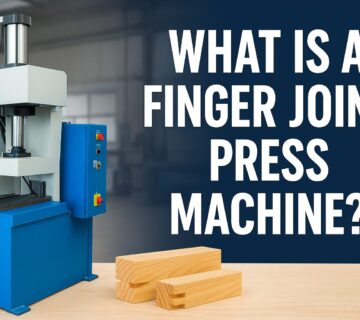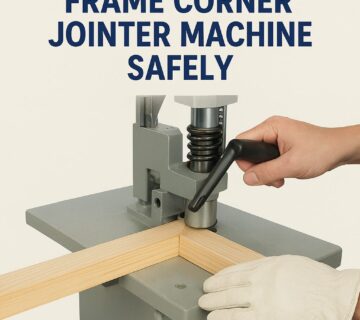In woodworking and frame-making, the frame corner machine and the rebating machine are both essential tools, each designed for specific tasks that contribute to the structure and functionality of frames. Understanding the differences between these two machines, as well as their unique applications, can help professionals select the right tool for their projects.
What is a Frame Corner Machine?
A frame corner machine is used primarily in the assembly of frames, joining the corners of frames or panels with precision and efficiency. This machine is commonly found in framing shops, woodworking facilities, and any workspace where sturdy, accurately joined frames are essential. Here are the main characteristics and uses of a frame corner machine:
- Purpose: To create precise, strong, and cleanly joined corners in frames.
- Functionality: This machine aligns, clamps, and secures frame corners, often using dowels, staples, or nails to achieve strong, durable joints.
- Materials: It can be used with wood, aluminum, and other materials depending on the model and the industry.
- Types: There are various types of frame corner machines, including pneumatic, hydraulic, and electric models, each offering different levels of precision and power.
Applications:
- Used for making picture frames, door frames, and window frames.
- Often used in furniture assembly for securing wooden panels and frames.
- Essential in industries like carpentry, furniture-making, and custom frame shops.
Advantages:
- Provides strong and accurate joints, crucial for aesthetic and functional stability.
- Increases productivity by allowing quick, repeatable frame assembly.
- Minimizes errors by aligning and clamping materials in place before joining.
What is a Rebating Machine?
A rebating machine, on the other hand, is used to cut rebates (or rabbets) – which are recesses or grooves along the edge of a piece of material. This type of groove allows another piece of material to fit snugly within it, which is particularly useful in joinery and frame-making.
- Purpose: To cut grooves or recesses along edges, allowing materials to fit together or hold inserts like glass or panels.
- Functionality: Rebating machines have adjustable cutting heads that create consistent, precise rebates on materials like wood and MDF.
- Types: Handheld routers can create rebates, but specialized rebating machines offer higher precision and speed, especially for large-scale production.
Applications:
- Used in cabinetry, door frames, window frames, and picture frames to create grooves for inserts or joint-fitting.
- Commonly applied in creating grooves for glass, mirrors, or panels in frames.
- Useful in structural woodworking where recessed joints add stability.
Advantages:
- Ensures a perfect fit for inserts, which is essential in frame assembly and cabinetry.
- Adds strength and stability to joints, especially in frames that will bear weight or need extra rigidity.
- Enhances aesthetic appeal by creating seamless, flush-fitting edges.
Key Differences Between Frame Corner and Rebating Machines
| Feature | Frame Corner Machine | Rebating Machine |
|---|---|---|
| Primary Purpose | Joining corners of frames with precision | Creating grooves (rebates) along material edges |
| Primary Function | Clamping and securing frame corners | Cutting recesses for joints or inserts |
| Application in Frames | Assembles corners of frames securely | Creates grooves for fitting glass or other inserts |
| Materials Used | Wood, aluminum, and other framing materials | Wood, MDF, and sometimes acrylics |
| Types of Joints | Butt joints, mitered corners | Recessed (rabbet) joints |
| Common Industries | Frame shops, furniture-making, carpentry | Cabinet-making, woodworking, frame-making |
Benefits of Using Both Machines in Frame-Making
For professional frame makers, using both a frame corner machine and a rebating machine offers a complete solution for creating high-quality frames:
- Precision and Strength: Frame corner machines provide stable, clean joints, while rebating machines ensure that inserts like glass or panels fit securely within the frame.
- Efficiency: Using both machines minimizes manual labor, speeds up the frame-making process, and reduces the chances of errors.
- Versatility: Together, these machines offer the flexibility to work with different materials, allowing for complex frame designs and ensuring they’re structurally sound.
Choosing the Right Machine for Your Needs
If you’re focused on assembly and alignment of frame corners, a frame corner machine will be your top choice, offering reliable and durable joints. If your work requires creating grooves for panel inserts or joints that fit snugly within frames, a rebating machine is essential.

